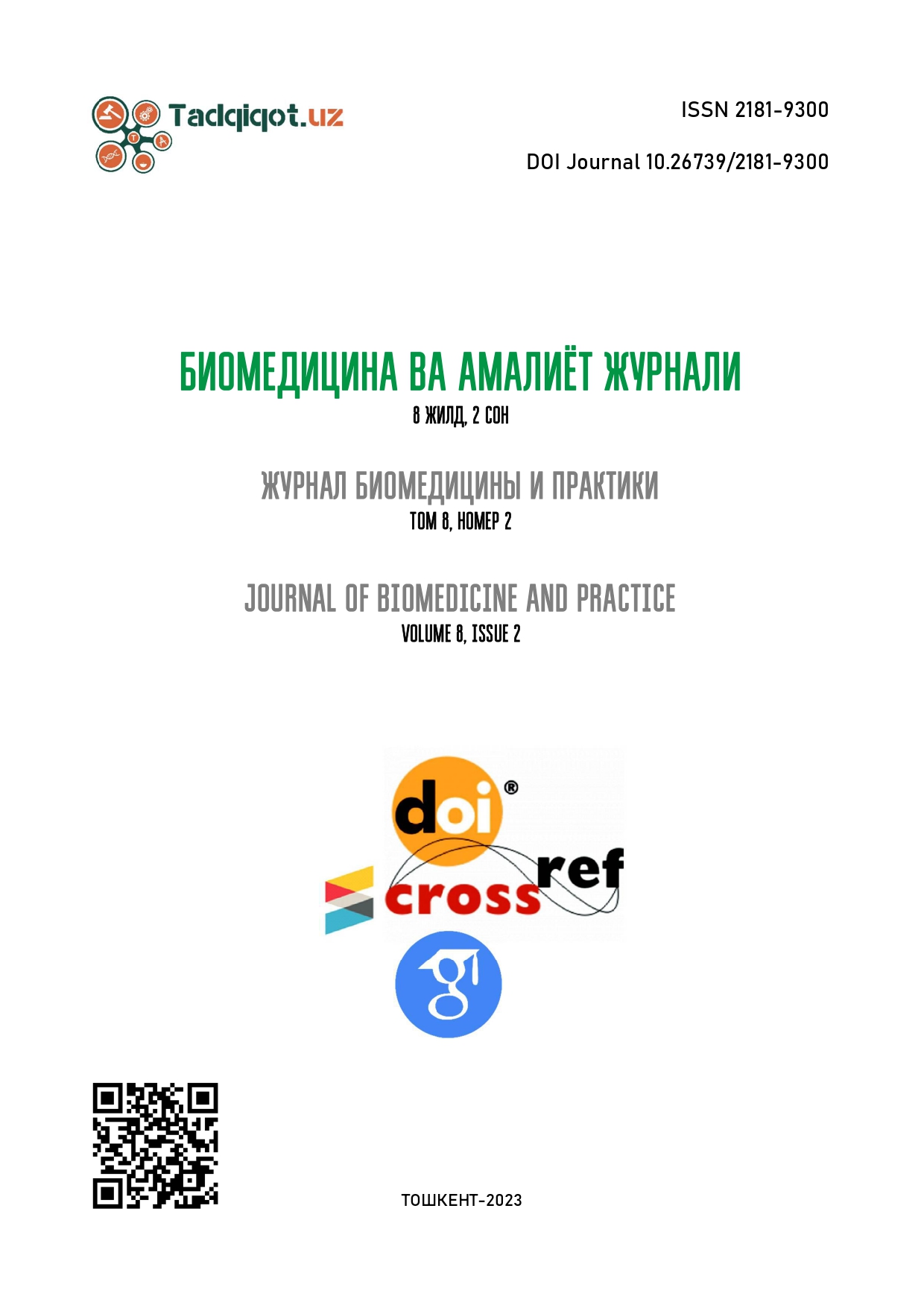CLINICAL COURSE IN CERTAIN HISTOLOGICAL VARIANTS OF BREAST CARCINOMA
Keywords:
breast cancer, tumor, morphology, paget's cancer, 5-year survival rateAbstract
Purpose: To determine the prognosis of survival depending on the histological variant of breast cancer.
Methods: For the study, personal observations of patients, analysis of case histories and outpatient records of patients treated in the Samarkand branch of the RSNPMTSOIR from 2017 to 2022 were used. During this time, 1,650 patients with primary breast cancers were treated.
Results of the study: Depending on the stage of the process in Paget breast cancer, patients were distributed as follows: I T1, 2 N0M0 in 6, IIa T2N0M0 in 13, IIB, T2N1M0 in 5, IIIa T3N0M0 in 4, IIIB, T1,2,3 N1,2 M0 in 6.
In the clinical examination of patients, the tumors had a bumpy surface and a dense consistency, 2 patients had dense enlarged axillary lymph nodes. 7 patients had I-IIa, T2N0M0 stage of the prevalence of the process, 2-IIIb, T2-3 N1-2 M0. The frequency of metastasis was 16.5%, information on 5-year survival is available for 2 patients, the rest of the patients continue to be monitored.
Extracts: The most common histological form (50%) was Paget's cancer, characterized by a slow course, high 3 and 5-year survival of patients with locally common processes.
References
И.В. Давыдовский И11 Общая патология человека / И.В. Давыдовский – М.:, 2012. – 612 с.
Corradini AG, Cremonini A, Cattani MG et al. Which type of cancer is detected in breast screening programs? Review of the literature with focus on the most frequent histological features // Pathologica. 2021;113(2):85–94. doi:10.32074/1591-951X-123
Desmedt Ch, Zoppoli G, Sotiriou Ch, Salgado R. Transcriptomic and genomic features of invasive lobular breast cancer // Seminars in Cancer Biology. 2017;44:98–105. doi:10.1016/j.semcancer.2017.03.007
Adachi Y, Ishiguro J, Kotani H et al. Comparison of clinical outcomes between luminal invasive ductal carcinoma and luminal invasive lobular carcinoma // BMC Cancer. 2016;16:248. doi:10.1186/s12885-016-2275-4
Chamalidou C, Fohlin H, Albertsson P et al. Survival patterns of invasive lobular and invasive ductal breast cancer in a large population-based cohort with two decades of follow up // Breast. 2021;59:294–300. doi:10.1016/j.breast.2021.07.011
Lu K, Wang X, Zhang W et al. Clinicopathological and genomic features of breast mucinous carcinoma // Breast. 2020;53:130–137. doi:10.1016/j.breast.2020.07.010.
Sharma P. Biology and Management of Patients With Triple-Negative Breast Cancer // The Oncologist. 2016;21(Issue 9):1050–1062 doi.org/10.1634/theoncologist.2016-0067
Zein DE, Hughes M, Kumar Sh et al. Metaplastic Carcinoma of the Breast Is More Aggressive Than Triple-negative Breast Cancer: A Study From a Single Institution and Review of Literature // Clin Breast Cancer. 2017;17(5):382–391. doi:10.1016/j.clbc.2017.04.009
Ignatov A, Eggemann H, Burger E, Ignatov T. Patterns of breast cancer relapse in accordance to biological subtype // J Cancer Res Clin Oncol. 2018;144(7):1347–1355. doi:10.1007/s00432- 018-2644-2
Moossdorff M, Vane MLG, Van Nijnatten TJA et al. Conditional local recurrence risk: the effect of event-free years in different subtypes of breast cancer // Breast Cancer Res Treat. 2021;186(3):863–870. doi:10.1007/s10549-020-06040-3
Shavkatovna, S. S., Maxammatkulovich, R. N., & qizi, S. N. A. (2022). Breast Pathology in Adolescent Girls. Central Asian Journal of Medical and Natural Science, 3(3), 66-71. https://doi.org/10.17605/OSF.IO/MVD63

